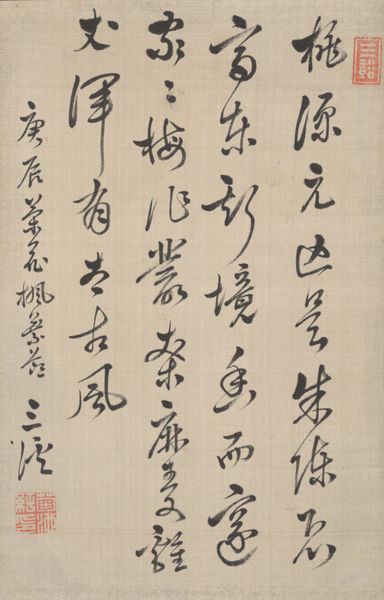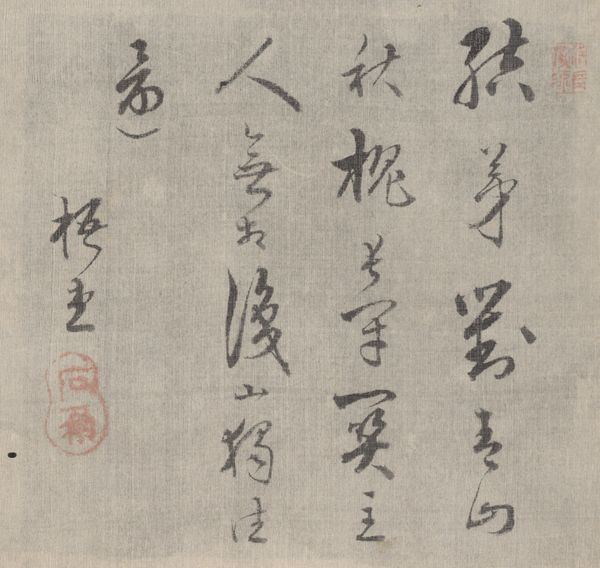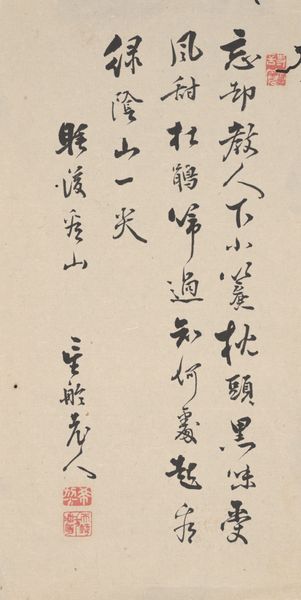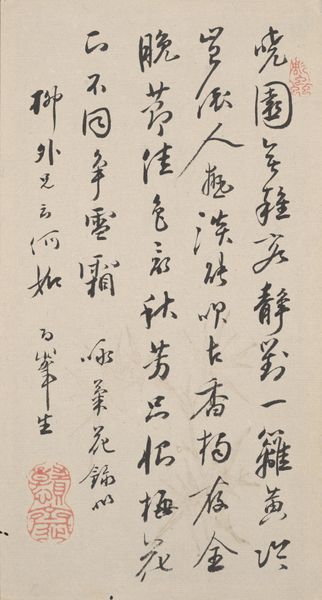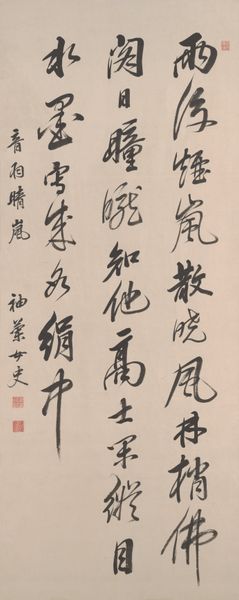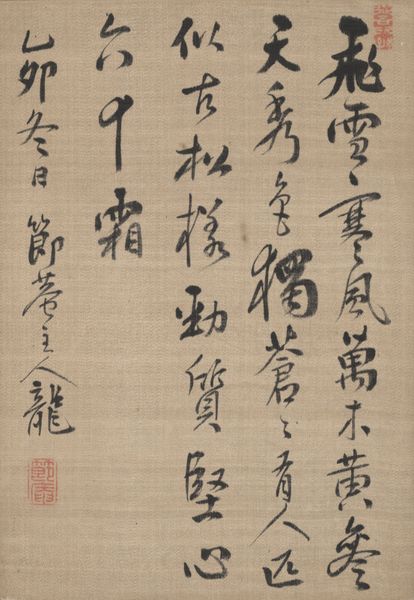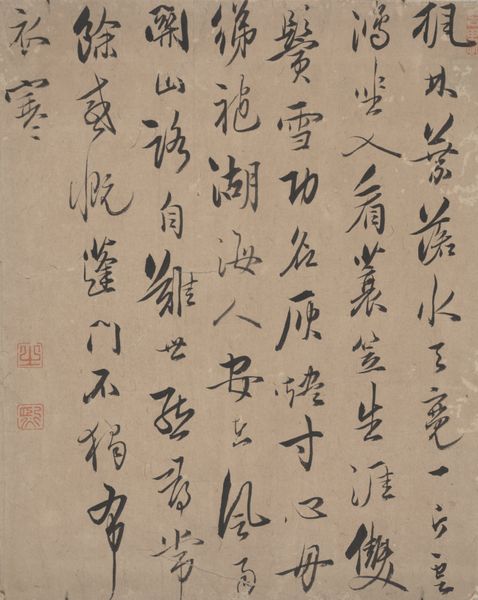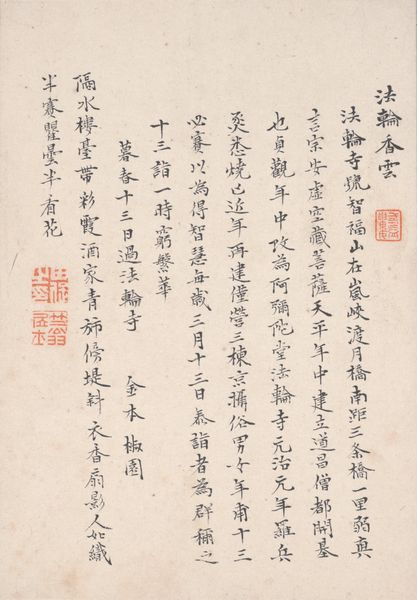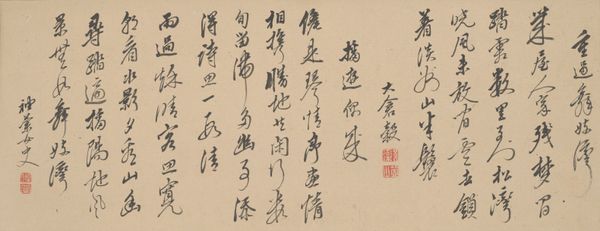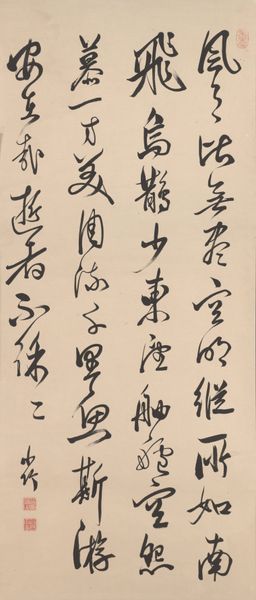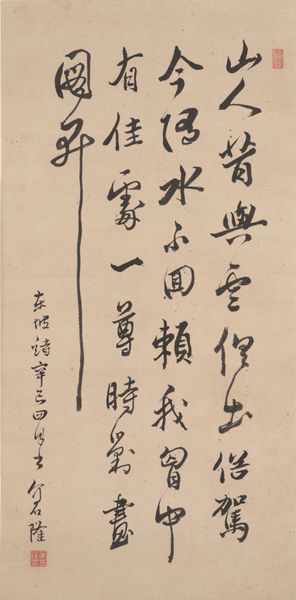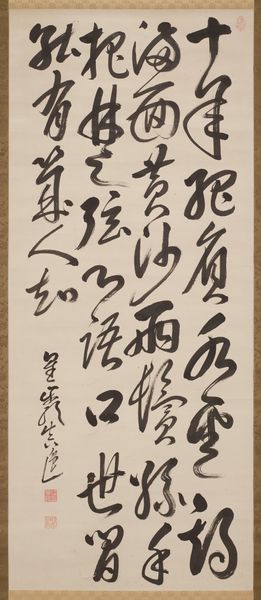
drawing, paper, ink
#
drawing
#
asian-art
#
japan
#
paper
#
ink
#
orientalism
#
line
#
calligraphy
Dimensions: 9 3/16 × 5 1/2 in. (23.34 × 13.97 cm)
Copyright: Public Domain
Curator: I’d like to draw your attention to a striking work from the Minneapolis Institute of Art. Created around the late 19th century, it is titled "Poem" and attributed to Ikkadō Hansui. It’s a drawing rendered in ink on paper. Editor: Immediately, I'm struck by the confident lines and how they dance across the pale paper, full of expression and latent with meaning. The starkness of the ink presents an intriguing visual rhythm. Curator: Indeed. The rhythmic quality you mention stems from its nature as calligraphy, where each stroke, each character, functions both as a signifier and as an abstract element. Notice the controlled variation in line thickness and the spatial relationships between the characters. These visual relationships carry just as much expressive weight as any literal content. Editor: Precisely. The calligraphic script lends it this symbolic density—every brushstroke appears imbued with cultural significance, acting as a window into the artist's inner thoughts and even, dare I say, spiritual state. Even a simple Western viewer is able to pick up on how the piece evokes classic East Asian traditions. Curator: It reflects an inherent dialogue between tradition and individual artistic gesture, even in the specific curves of a single brush stroke. Consider the balance between empty space, 'Ma,' and the density of the characters themselves, which contribute to a composition with an inherent harmony and balance. It seems quite deliberately crafted to promote introspection. Editor: The symbolic power! This contrast between positive and negative space conjures something about the search for knowledge and deeper understanding. I cannot help but wonder how the artist used this “poem” as a device, to evoke cultural values and to reinforce communal memory by combining the visual and the literary, where calligraphy and poetry can be mutually illuminated by the very context of that memory? Curator: A potent perspective. Close study of how formal elements relate generates fresh insights into the emotional context surrounding art pieces. This offers yet another layer of potential connection. Editor: Yes, allowing for many subjective perspectives based on cultural and historic lenses. It’s as if this image invites us on a journey— Curator: One deeply embedded within its meticulous structure. Editor: An insightful observation indeed! It gives us plenty to consider.
Comments
No comments
Be the first to comment and join the conversation on the ultimate creative platform.
